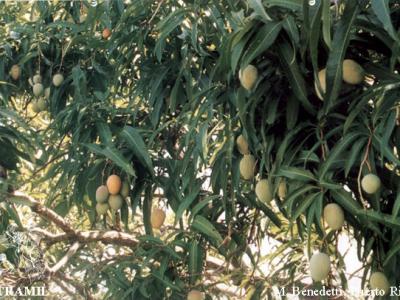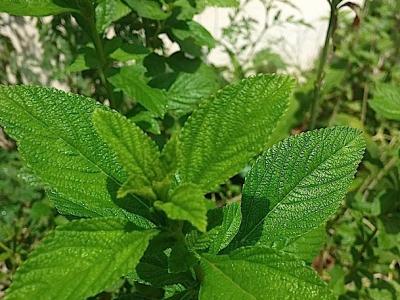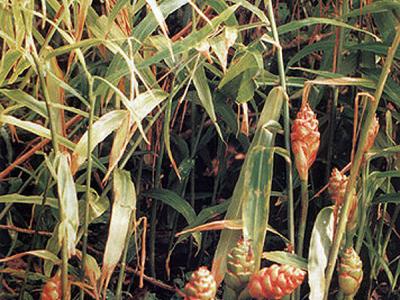(dans les territoires avec usage significatif TRAMIL)
Sainte-Lucie:
- mango
Guatemala:
- mango
Haïti:
- mango
feuille, infusion, voie orale2
Selon l’information disponible :
L’emploi de la fleur contre les bronchites est classé REC sur la base de l’usage significatif traditionnel documenté par les enquêtes TRAMIL, les études de validation et de toxicité.
L’emploi contre l’asthénie, l’indigestion (aigreur d’estomac), la pneumopathie et la toux est classé REC sur la base de l’usage significatif traditionnel documenté par les enquêtes TRAMIL et les études de toxicité.
La bronchite ou la pneumopathie étant dangereuses pour la santé, il est recommandé de consulter un médecin au préalable. L’emploi de cette ressource doit être considéré comme un complément au traitement médical, sauf contre-indication.
Si l’état du patient se détériore, ou si la bronchite, la pneumopathie ou la toux durent plus de 3 jours, consulter un médecin.
Ne pas employer avec des femmes enceintes, allaitantes, ni avec des enfants de moins de 5 ans.
Les fruits de Mangifera indica constituent un aliment de consommation humaine relativement répandu.
Contre la bronchite, la pneumopathie ou la toux :
Préparer une décoction avec 15-20 grammes de feuilles ou 10 grammes de fleurs dans 4 tasses (1 litre) d’eau, faire bouillir 5 minutes dans un récipient couvert. Laisser refroidir, filtrer et boire 1 tasse 3 fois par jour27.
Contre l’indigestion ou l’asthénie :
Préparer une infusion, en ajoutant 1 tasse (250 millilitres) d’eau bouillante à 4 feuilles. Recouvrir le récipient, laisser reposer pendant 5 minutes, filtrer et boire 1 tasse 3 fois par jour.
Toute préparation médicinale doit être conservée au froid et utilisée dans les 24 heures.
1 GIRON L, 1988
Encuesta TRAMIL (Costa atlántica). Centro Mesoamericano de Tecnología CEMAT, Guatemala, Guatemala.
2 JEAN-PIERRE L, 1988
TRAMIL survey. St. Lucia national herbarium, Castries, St. Lucia
3 WENIGER B, ROUZIER M, 1986
Enquête TRAMIL. Service Oecuménique d'Entraide SOE, Port au Prince, Haïti.
4 CRAVEIRO AA, ANDRADE CH, MATOS FJ, ALENCAR JW, MACHADO MI, 1980
Volatile constituents of Mangifera indica Linn. Rev Latinoamer Quim 11:129.
5 TANAKA T, SUEYASU T, NONAKA G-I, NISHIOKA I, 1984
Tannins and related compounds. XXI. Isolation and characterization of galloyl and p-hydroxybenzoyl esters of benzophenone and xanthone c-glucosides from Mangifera indica L. Chem Pharm Bull 32(7):2676-2686.
6 PROCTOR JTA, CREASY LL, 1969
The anthocyanin of the mango fruit. Phytochemistry 8(10):2108.
7 SHAFT N, IKRAM M, 1982
Quantitative survey of rutin-containing plants. Part 1. Int J Crude Drug Res 20(4):183-186.
8 NIGAM IC, 1962
Studies in some Indian essential oils. Agra Univ J Res Sci 11:147-152.
9 LU ZY, MAO HD, HE MR, LU SY, 1982
Studies on the chemical constituents of mangguo (Mangifera indica) leaf. Chung Ts'ao Yao 13:3-6.
10 PHARM XS, PHARM GK, 1991
The extraction and determination of the flavonoid mangiferin in the bark and leaves of Mangifera indica. Tap Chi Duoc Hoc 5:8-19.
11 ANJANEYULU V, PRASAD KH, RAO GS, 1982
Triterpenoids of the leaves of Mangifera indica. Indian J Pharm Sci 44:58-59.
12 GRIFFITHS LA, 1959
On the distribution of gentisic acid in green plants. J Exp Bot 10(3):437-442.
13 GHOSAL S, BISWAS K, CHATTOPADHYAY BK, 1978
Differences in the chemical constituents of Mangifera indica infected with Aspergillus niger and Fusarium moniliformae. Phytochemistry 17(4):689-694.
14 KHAN MA, KHAN MNI, 1989
Alkyl gallates of flowers of Mangifera indica. Fitoterapia 60(3):284.
15 KHAN MA, KHAN MNI, 1993
Studies in the chemical constituents of flowers of Mangifera indica. Part-II. Isolation and characterization of some alkylgallates from blossoms of Mangifera indica. Pak J Sci Ind 35(7/8):276-278.
16 DUKE JA, ATCHLEY AA, 1986
Handbook of proximate analysis tables of higher plants. Boca Raton, USA: CRC Press. p105.
17 GARCIA GM, COTO MT, GONZALEZ CS, PAZOS L, 1998
Velocidad del tránsito intestinal en ratón, del extracto acuoso de hoja fresca de Mangifera indica. Informe TRAMIL. Laboratorio de Ensayos Biológicos LEBi, Escuela de Medicina, Universidad de Costa Rica, San Pedro, Costa Rica.
18 CACERES A, GONZALEZ S, GIRON L, 1998
Demostración de la actividad antimicrobiana de plantas tramil en base a los usos populares en la cuenca del Caribe. Informe TRAMIL. Laboratorio de productos fitofarmacéuticos Farmaya y Facultad de Ciencias Químicas y Farmacia, Universidad de San Carlos, Guatemala, Guatemala.
19 GARCIA GM, COTO MT, GONZALEZ CS, PAZOS L, 1999
Actividad bronquial del extracto acuoso de flores frescas de Mangifera indica. Informe TRAMIL. Laboratorio de Ensayos Biológicos LEBi, Escuela de Medicina, Universidad de Costa Rica, San Pedro, Costa Rica.
20 SOUZA BRITO ARM, HIRUMA-LIMA CA, LIMA ZP, 2003
Atividades biológicas obtidas dos extratos hidroalcoólicos das folhas e flores da Mangifera indica. Informe TRAMIL, Depto. Fisiologia, Inst. Biociências UNESP, Botucatu, SP y Depto. Fisiologia, Inst. Biologia, UNICAMP, Campinas, Sao Paulo, Brasil.
21 ASWAL BS, BHAKUNI DS, GOEL AK, KAR K, MEHROTRA BN, MUKHERJEE KC, 1984
Screening of Indian plants for biological activity: Part X. Indian J Exp Biol 22(6):312-332.
22 HERRERA J, 1992
Determinación de parámetros farmacológicos usados en medicina tradicional popular en la cuenca del Caribe. Informe TRAMIL. Dep. de Farmacología, Facultad de Salud, Universidad del Valle, Cali, Colombia.
23 GARCIA GM, COTO MT, GONZALES CS, PAZOS L, 2000
Toxicidad aguda en ratones, del extracto acuoso de flores frescas de Mangifera indica. Informe TRAMIL. Laboratorio de Ensayos Biológicos LEBi, Escuela de Medicina, Universidad de Costa Rica, San Pedro, Costa Rica.
24 FRAME AD, RIOSOLIVARES E, DE JESUS L, ORTIZ D, PAGAN J, MENDEZ S, 1998
Plants from Puerto Rico with anti-Mycobacterium tuberculosis properties. P R Health Sci J 17(3):243-253.
25 SHARMA SR, DWIVEDI SK, SWARUP D, 1997
Hypoglycaemic potential of Mangifera indica leaves in rats. Int J Pharmacog 35(2):130-133.
26 OLIVER-BEVER B, 1986
Medicinal plants in tropical West Africa. Cambridge, USA: Cambridge University Press.
27 GUPTA MP, ARIAS TD, CORREA M, LAMBA SS, 1979
Ethnopharmacognostic observations on Panamanian medicinal plants. Part I. Q J Crude Drug Res 17(3/4):115-130.




